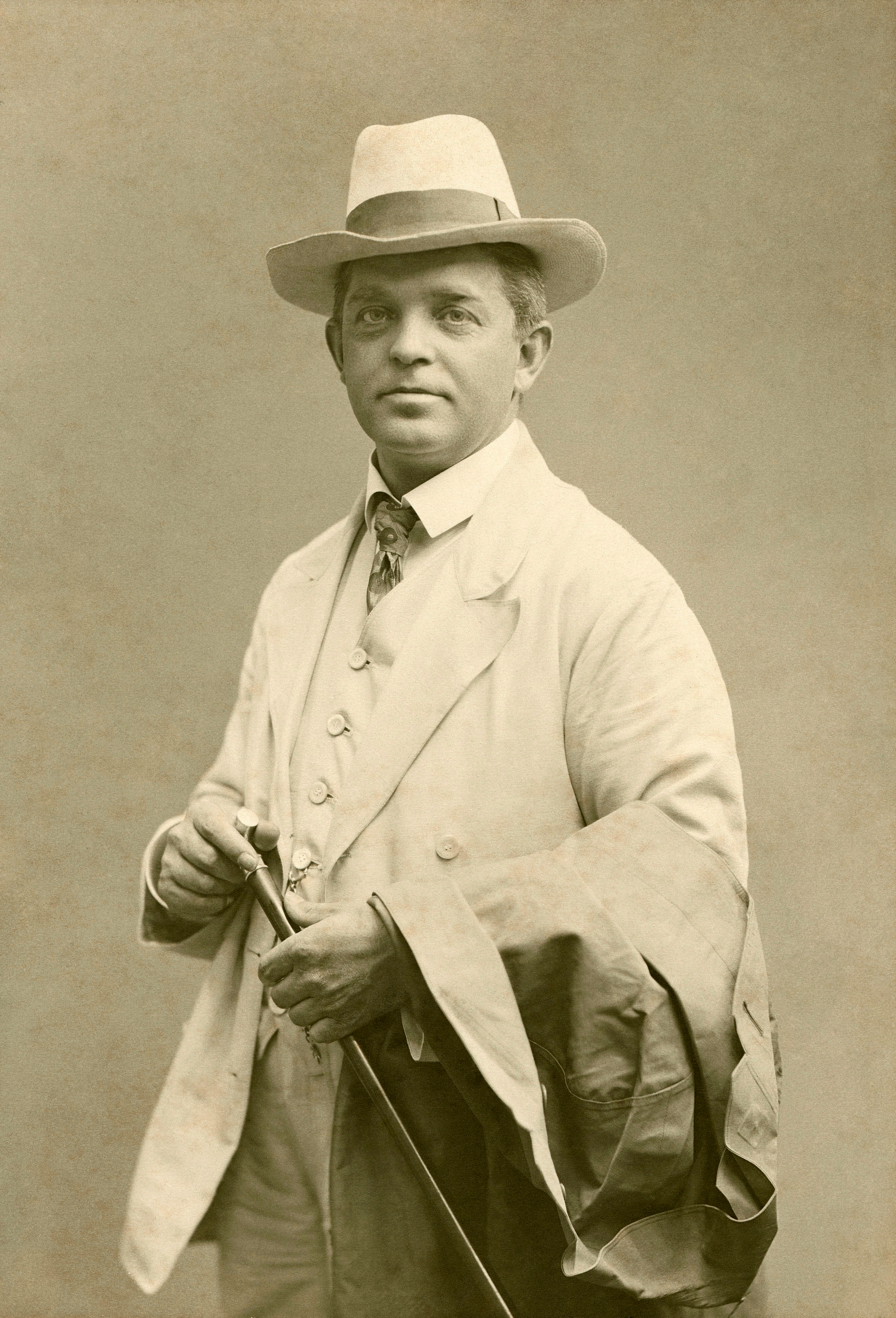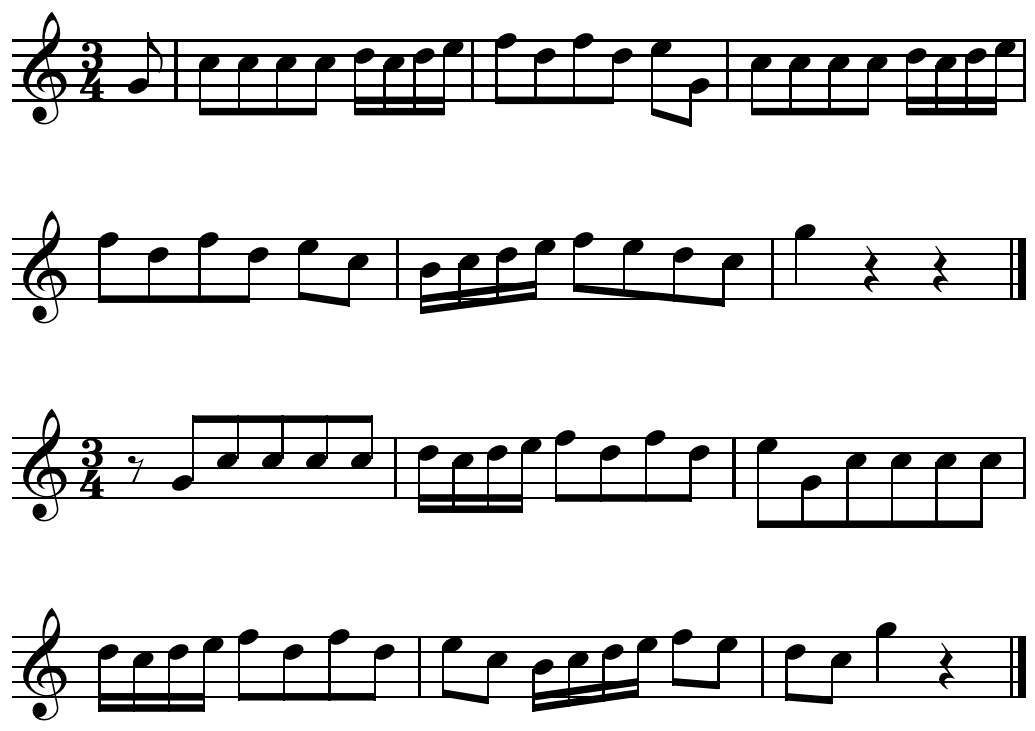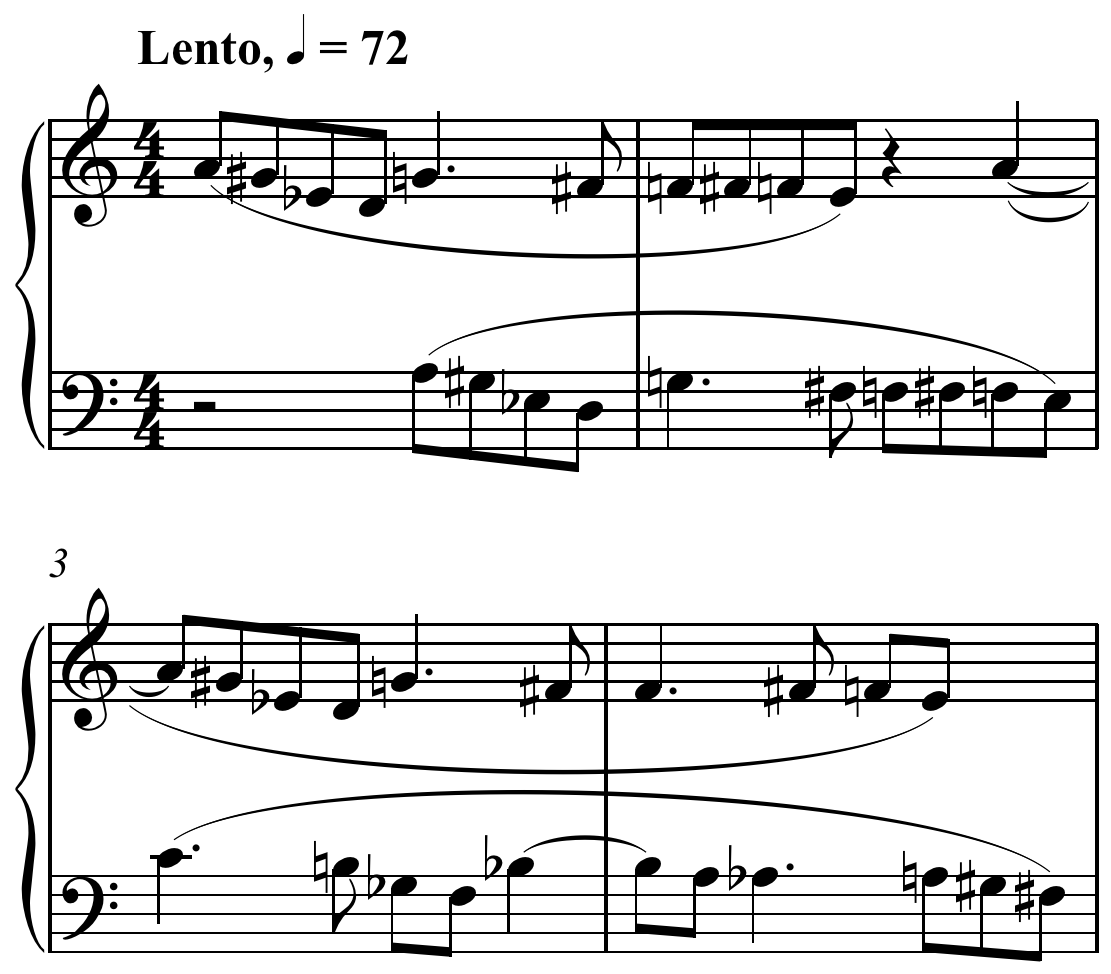|
Tre Motetter
' (''Three Motets''), FS 139, Op. 55, is a composition for unaccompanied choir by Carl Nielsen. It is a setting of three quotations in Latin from different psalms chosen by the composer and his wife Anne Marie Carl-Nielsen. The three motets, ', ' and ' were first performed on 11 April 1930 at the Ny Carlsberg Glyptotek by Mogens Wöldike and the Palestrina choir, to whom they are dedicated. Among the composer's last works, they were published in 1931 by the in Copenhagen. History and words Nielsen listened in 1928 to a concert of a cappella Renaissance polyphony conducted by Mogens Wöldike. The conductor asked Nielsen, his former teacher, to compose something for the group, and made suggestions for texts. Instead, Nielsen and his wife Anne-Marie selected sections from different psalms. Nielsen composed the works from April to August 1929 while studying vocal polyphonic music by Renaissance composers. "" is the ninth verse of Psalm 38 (Psalm 37 in the Vulgate), translat ... [...More Info...] [...Related Items...] OR: [Wikipedia] [Google] [Baidu] |
Carl Nielsen
Carl August Nielsen (; 9 June 1865 – 3 October 1931) was a Danish composer, conductor and violinist, widely recognized as his country's most prominent composer. Brought up by poor yet musically talented parents on the island of Funen, he demonstrated his musical abilities at an early age. He initially played in a military band before attending the Royal Danish Academy of Music in Copenhagen from 1884 until December 1886. He premiered his Op. 1, '' Suite for Strings'', in 1888, at the age of 23. The following year, Nielsen began a 16-year stint as a second violinist in the Royal Danish Orchestra under the conductor Johan Svendsen, during which he played in Giuseppe Verdi's ''Falstaff'' and '' Otello'' at their Danish premieres. In 1916, he took a post teaching at the Royal Danish Academy and continued to work there until his death. Although his symphonies, concertos and choral music are now internationally acclaimed, Nielsen's career and personal life were marked by man ... [...More Info...] [...Related Items...] OR: [Wikipedia] [Google] [Baidu] |
Psalm 38
Psalm 38 is the 38th psalm of the Book of Psalms, entitled "A psalm of David to bring to remembrance", is one of the 7 Penitential Psalms.Kirkpatrick, A. (1906)Cambridge Bible for Schools and Collegeson Psalm 38, accessed 3 November 2021 In the slightly different numbering system used in the Greek Septuagint version of the Bible, and in the Latin Vulgate, this psalm is Psalm 37. In the English King James Version of the Bible, it begins: "O lord, rebuke me not in thy wrath". In Latin, it is known as "". The title "to bring to remembrance" also applies to Psalm 70. Text Hebrew Bible version The following is the Hebrew text of Psalm 38: King James Version # O Lord, rebuke me not in thy wrath: neither chasten me in thy hot displeasure. # For thine arrows stick fast in me, and thy hand presseth me sore. # There is no soundness in my flesh because of thine anger; neither is there any rest in my bones because of my sin. # For mine iniquities are gone over mine head: as a heavy ... [...More Info...] [...Related Items...] OR: [Wikipedia] [Google] [Baidu] |
Compositions By Carl Nielsen
This table of works by the Danish composer Carl Nielsen initially lists them by genre and composition date within a genre. History Nielsen wrote music in many genres, notably symphonies, concertos and choral music, but also operas and incidental music, chamber music, solo works for violin, piano and organ as well as a considerable number of songs. Nielsen assigned an opus number only to selected compositions, from Op 1 for the Suite for String Orchestra in 1888 to Op 58 for the organ work (1930–1931). The opus number 59 was assigned posthumously to three piano pieces (1928). The FS catalogue was first compiled in 1965 by Dan Fog and Torben Schousboe. It is arranged roughly in chronological order in accordance with the publication date of the works, initially up to FS 161. Compositions discovered after 1965 were assigned higher numbers, in connection with the publication of a Nielsen CD in 1998. The CNW (Catalogue of Carl Nielsen's Works), compiled by the Royal Da ... [...More Info...] [...Related Items...] OR: [Wikipedia] [Google] [Baidu] |
Phrasing (music)
Musical phrasing is the method by which a musician shapes a sequence of notes in a passage of music to allow expression, much like when speaking English a phrase may be written identically but may be spoken differently, and is named for the interpretation of small units of time known as phrases (half of a period). A musician accomplishes this by interpreting the music—from memory or sheet music—by altering tone, tempo, dynamics, articulation, inflection, and other characteristics. Phrasing can emphasise a concept in the music or a message in the lyrics, or it can digress from the composer's intention, aspects of which are commonly indicated in musical notation called phrase marks or phrase markings. For example, accelerating the tempo or prolonging a note may add tension. Giuseppe Cambini—a composer, violinist, and music teacher of the Classical period—had this to say about bowed string instruments, specifically violin, phrasing: Intuitive and analytical phra ... [...More Info...] [...Related Items...] OR: [Wikipedia] [Google] [Baidu] |
Dynamics (music)
In music, the dynamics of a piece is the variation in loudness between notes or phrases. Dynamics are indicated by specific musical notation, often in some detail. However, dynamics markings still require interpretation by the performer depending on the musical context: for instance, the ''forte'' marking (meaning loud) in one part of a piece might have quite different objective loudness in another piece or even a different section of the same piece. The execution of dynamics also extends beyond loudness to include changes in timbre and sometimes tempo rubato. Purpose and interpretation Dynamics are one of the expressive elements of music. Used effectively, dynamics help musicians sustain variety and interest in a musical performance, and communicate a particular emotional state or feeling. Dynamic markings are always relative. never indicates a precise level of loudness; it merely indicates that music in a passage so marked should be considerably quieter than . There are ma ... [...More Info...] [...Related Items...] OR: [Wikipedia] [Google] [Baidu] |
Homophony
In music, homophony (;, Greek: ὁμόφωνος, ''homóphōnos'', from ὁμός, ''homós'', "same" and φωνή, ''phōnē'', "sound, tone") is a texture in which a primary part is supported by one or more additional strands that flesh out the harmony. One melody predominates while the other parts play either single notes or an elaborate accompaniment. This differentiation of roles contrasts with equal-voice polyphony (in which similar lines move with rhythmic and melodic independence to form an even texture) and monophony (in which all parts move in unison or octaves). Historically, homophony and its differentiated roles for parts emerged in tandem with tonality, which gave distinct harmonic functions to the soprano, bass and inner voices. A homophonic texture may be homorhythmic, which means that all parts have the same rhythm. Chorale texture is another variant of homophony. The most common type of homophony is melody-dominated homophony, in which one voice, often the ... [...More Info...] [...Related Items...] OR: [Wikipedia] [Google] [Baidu] |
Imitation (music)
In music, imitation is the repetition of a melody in a polyphonic texture shortly after its first appearance in a different voice. The melody may vary through transposition, inversion, or otherwise, but retain its original character. The intervals and rhythms of an imitation may be exact or modified; imitation occurs at varying distances relative to the first occurrence, and phrases may begin with voices in imitation before they freely go their own ways. Imitation helps provide unity to a composition and is used in forms such as the fugue and canon. Definitions When a phrase recurs exactly as before (except perhaps transposed), it is called strict imitation. A round is thus an example of strict imitation. Repetition is defined as the repetition of a phrase or melody often with variations in key, rhythm, and voice. Different authors define imitation somewhat differently: The point of imitation, "marks the beginning of a series of imitative entries in a contrapuntal c ... [...More Info...] [...Related Items...] OR: [Wikipedia] [Google] [Baidu] |
Pierluigi Da Palestrina
Giovanni Pierluigi da Palestrina ( – 2 February 1594) was an Italian composer of late Renaissance music. The central representative of the Roman School, with Orlande de Lassus and Tomás Luis de Victoria, Palestrina is considered the leading composer of late 16th-century Europe. Primarily known for his masses and motets, which number over 105 and 250 respectively, Palestrina had a long-lasting influence on the development of church and secular music in Europe, especially on the development of counterpoint. According to ''Grove Music Online'', Palestrina's "success in reconciling the functional and aesthetic aims of Catholic church music in the post-Tridentine period earned him an enduring reputation as the ideal Catholic composer, as well as giving his style (or, more precisely, later generations’ selective view of it) an iconic stature as a model of perfect achievement." Biography Palestrina was born in the town of Palestrina, near Rome, then part of the Papal States to Ne ... [...More Info...] [...Related Items...] OR: [Wikipedia] [Google] [Baidu] |
Neo-Renaissance
Renaissance Revival architecture (sometimes referred to as "Neo-Renaissance") is a group of 19th century architectural revival styles which were neither Greek Revival nor Gothic Revival but which instead drew inspiration from a wide range of classicizing Italian modes. Under the broad designation Renaissance architecture nineteenth-century architects and critics went beyond the architectural style which began in Florence and Central Italy in the early 15th century as an expression of Renaissance humanism; they also included styles that can be identified as Mannerist or Baroque. Self-applied style designations were rife in the mid- and later nineteenth century: "Neo-Renaissance" might be applied by contemporaries to structures that others called "Italianate", or when many French Baroque features are present (Second Empire). The divergent forms of Renaissance architecture in different parts of Europe, particularly in France and Italy, has added to the difficulty of defining an ... [...More Info...] [...Related Items...] OR: [Wikipedia] [Google] [Baidu] |
Psalm 31
Psalm 31 is the 31st psalm of the Book of Psalms, beginning in English in the King James Version: "In thee, O , do I put my trust". In Latin, it is known as "In te Domine speravi". The Book of Psalms is part of the third section of the Tanakh, Hebrew Bible, and a book of the Christianity, Christian Old Testament. In the slightly different numbering system used in the Greek Septuagint version of the Bible, and in its Latin translation, the Vulgate, this psalm is Psalm 30. The first verse in the Hebrew text indicates that it was composed by David. The psalm forms a regular part of Jewish history, Jewish, Catholic Church, Catholic, Lutheranism, Lutheran, Anglicanism, Anglican and other Protestant liturgies. Metrical hymns in English and German were derived from the psalm, such as "In dich hab ich gehoffet, Herr" and "Blest be the name of Jacob's God". The psalm has often been set to music, both completely and using specific sections such as "Illumina faciem tuam" (Make thy face to ... [...More Info...] [...Related Items...] OR: [Wikipedia] [Google] [Baidu] |
Psalm 23
Psalm 23 is the 23rd psalm of the Book of Psalms, beginning in English in the King James Version: "The Lord is my shepherd". In Latin, it is known by the incipit, "". The Book of Psalms is part of the third section of the Hebrew Bible, and a book of the Christian Old Testament. In the slightly different numbering system used in the Greek Septuagint and Latin Vulgate translations of the Bible, this psalm is Psalm 22. Like many psalms, Psalm 23 is used in both Jewish and Christian liturgies. It has often been set to music. Haredi educator Tziporah Heller referred to it as perhaps the best-known of the psalms due to "its universal message of trust in God, and its simplicity." Text Hebrew Bible version The following is the Hebrew text of Psalm 23: English translation (King James Version) : A Psalm of David. # The is my shepherd; I shall not want. # He maketh me to lie down in green pastures: he leadeth me beside the still waters. # He restoreth my soul: he leadeth me in the pat ... [...More Info...] [...Related Items...] OR: [Wikipedia] [Google] [Baidu] |
King James Version
The King James Version (KJV), also the King James Bible (KJB) and the Authorized Version, is an Bible translations into English, English translation of the Christian Bible for the Church of England, which was commissioned in 1604 and published in 1611, by sponsorship of King James VI and I. The List of books of the King James Version, 80 books of the King James Version include 39 books of the Old Testament, an Intertestamental period, intertestamental section containing 14 books of what Protestantism, Protestants consider the Biblical apocrypha#King James Version, Apocrypha, and the 27 books of the New Testament. Noted for its "majesty of style", the King James Version has been described as one of the most important books in English culture and a driving force in the shaping of the English-speaking world. The KJV was first printed by John Norton and Robert Barker (printer), Robert Barker, who both held the post of the King's Printer, and was the third translation into Englis ... [...More Info...] [...Related Items...] OR: [Wikipedia] [Google] [Baidu] |







